Raccoon or common raccoon (Procyon Lotor) is an intelligent animal. They are so intelligent that they can solve complex problems, remember things easily, and can distinguish between objects.
The name Lotor comes from an interesting habit, they wash their food before eating, which means washer. With such facts, raccoons are highly interesting organisms. Do you want to learn more about raccoons? Are you interested in raccoons’ social, physical, mating, feeding, and other behaviors?
In this guide, we will discuss different behavioral facts about raccoons. The discussion will include the behavioral facts according to their physical, matting, social, growth, diet, and many more aspects. To learn more, keep reading till the end.
A Short Overview of the Behavioral Traits of Raccoons
Before discussing the behavioral facts of Raccoons, a short overview of their different behavioral traits may help to catch up with their lifestyle in short.
| Behavioral Traits | Key Facts |
|---|---|
| Physical Adaptations | 1. Physical adaptations in growth & development 2. Life Span |
| Feeding Habits | 1. Omnivorous 2. known as “trash pandas.” 3. Feeding techniques, |
| Mating & Breeding Habits | 1. Mating Season 2. Courtship 3. Breeding period. 4. Nursing newborns 5. Migration pattern |
| Hibernation behavior | 1. Hibernating organisms |
| Ecological Adaptations | 1. Adapt to the environment 2. Role in Eco System |
| Social behavior | 1. Lives socially 2. Communication Skills |
| Aggressiveness | 1. Defensing Dens & Cubs 2. Competing Food |
If you want to know more about reccoon, you must explore discussion from my blog.
Why Do Raccoons Behave Significantly?
The foremost reason for raccoons to behave significantly is to adapt to the environment and to survive. This happens based on different facts.
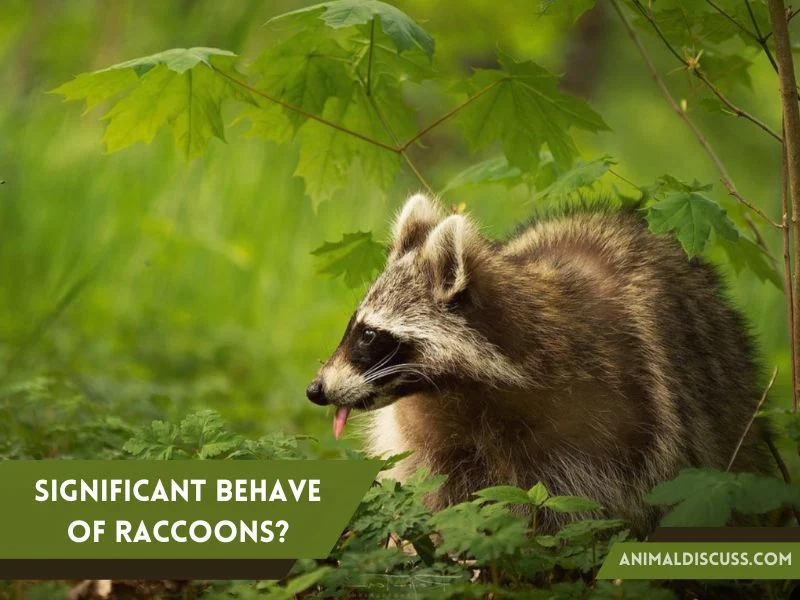
Such as food availability, environment, predation risk, social activities, and so on impact their behavioral aspects.
The Significance of Understanding Diversified Behavior
Raccoon is one of the most seen mammals in every corner of the USA. As they have great adaptability to the environment, and human-populated areas are the most chosen places, people must understand the diversified behavior of Raccoons.
Raccoons’ Behavioral Conservation: Raccoons significantly impact the ecosystem. Understanding their behavior will help to understand how they impact the ecosystem and how to manage the cycle by giving them good opportunities.
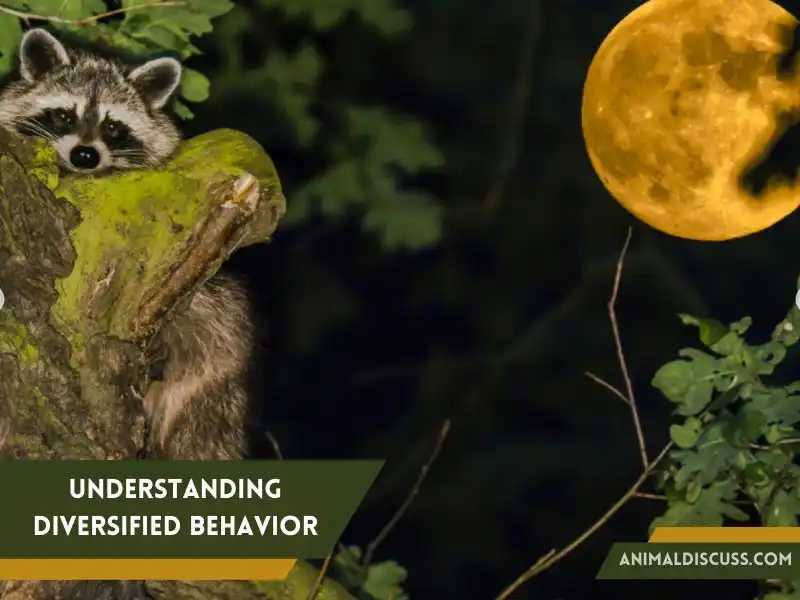
Public Health Management: Raccoons contain several diseases. Among them, rabies, tularemia, canine distemper, leptospirosis, etc. Understanding their diversified behavior is highly crucial to managing public health. This helps to reduce the risk of exposure to raccoons all of a sudden.
Wildlife Management: As we mentioned before, raccoons are such mammals that wander around everywhere. And they are found in dustbins and other garbage areas.
So, it is pretty obvious that conflict between the raccoons and humans can take place unintentionally. Also, if they are found in residences and encountered by children, they can scare the children.
Growing Habits: Structural & Physical Adaptations
Growth habits or Structural behavior means the physical adaptation of raccoons. They have a distinguished growth structure & appearance. Here you will find some of the facts regarding physical adaptations:
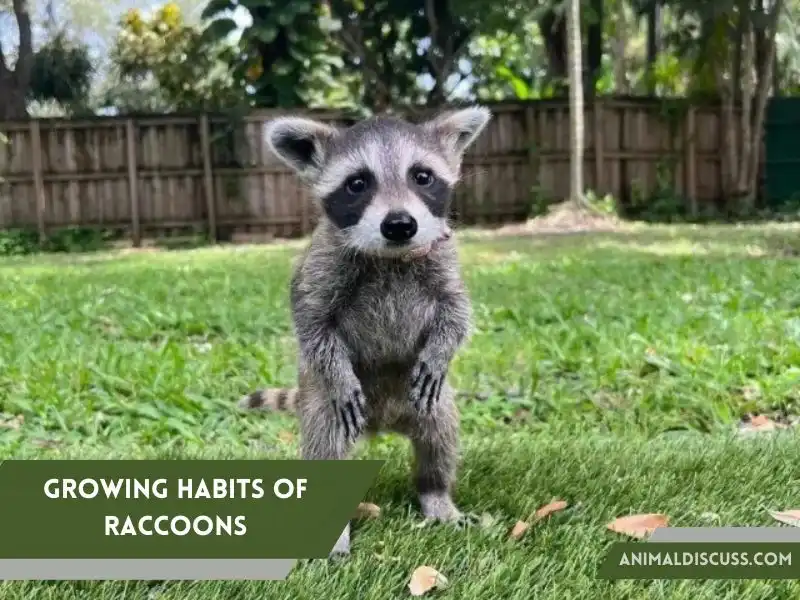
- The most significant structural adaptation of raccoons is their masked face. The black fur that surrounds the raccoons’ eyes resembles a bandit mask.
But why do raccoons have masks? You will be astonished to know that the Raccoon face mask helps to enhance night vision by absorbing light and reducing glare.
- A raccoon’s most diverse physical characteristic is its weight. The weight of an adult raccoon varies significantly, ranging from 2 kg to 26 kg.
- An adult raccoon, can be lengthened up to 43 inches. Without the tail, the length of a raccoon could be 16 to 28 inches. The males are typically slightly larger than the females.
- Their face and body fur is grayish-brown. The hue might be anything from silver to sienna. However, the raccoons have white hair around their rounded ears.
- Raccoons’ tails are special for their light and dark ring marks that particularly distinguishes them from other animals, even from a distance.
- Raccoons have thick fur with an average of 1-inch thickness. It helps to keep them warm in cold temperatures.
- They can run at moderate speed. They have an average speed of up to 16 to 24 kmph.
What do you think? do raccoons climb trees? Yah!! They also climb trees and other buildings mostly for food and escape from predators.
- Raccoons have an average lifespan of 2 to 3 years in the wild. They can live up to 20 years in captivity.
- Another crucial body part of raccoons is their paws. They are super sensitive with horny layers on them. Their convenient paw structure allows them to do complex tasks easily, like human hands.
- Aside from these, raccoons have vibrissae on the top of their claws. With the help of the vibrissae, they can sense anything even before touching the objects around them.
Now let’s check the different behavior of the physical development phases of raccoons.
Physical Development
Newborn Babies: Their eyes remain closed. They can just crawl to move. The fur remains light-colored, and they weigh around 100 grams. Also, newborn babies are as tiny as 4.5 inches to 6 inches.
7 Days to 14 Days: At the 7-day mark, baby raccoons start to develop their tail color. By this time, the body development keeps slower, and the head remains slightly larger compared to the entire body structure.
Also, the baby raccoons start to create sounds like whining and chattering for food.
21 to 30 Days: At the 3-week mark, the fur color and thickness get deeper. The face mask of the raccoons appears well. Another big development of raccoons that happens at the 3-week mark is their eye-opening. They also reach 10 inches in length.
30 to 42 days: At the 5-week mark, raccoon cubs start to walk and climb trees. Their bodies gain weight, around 550 grams. And at the 6-week mark, baby raccoons’ teeth are seen.
2 to 3 months: At the 2-month mark, raccoon kitties start to take solid food along with their mother’s milk. Though they weaned their mother’s milk at the 4-month mark. By this time, they have developed their survival instinct.
4 to 6 months: By this time, raccoons develop their adult digestive system and teeth. They are entirely capable of surviving in this stage.
9 to 12 months: The young raccoons reach their sexual ability and can mate and breed. After this age range, they become full adults, and no further physical changes occur.
Hearing Development
Like eye-opening, raccoons can first hear at the 3-week mark. However, hearing development starts slightly after they can open their eyes. They fully develop their hearing ability before 3 weeks end.
Physical Differences Among Common Species of Raccoons
Based on the region raccoons are found, they have some distinguishable differences. Here is a short comparison of physical differences among the 3 most common raccoon species.
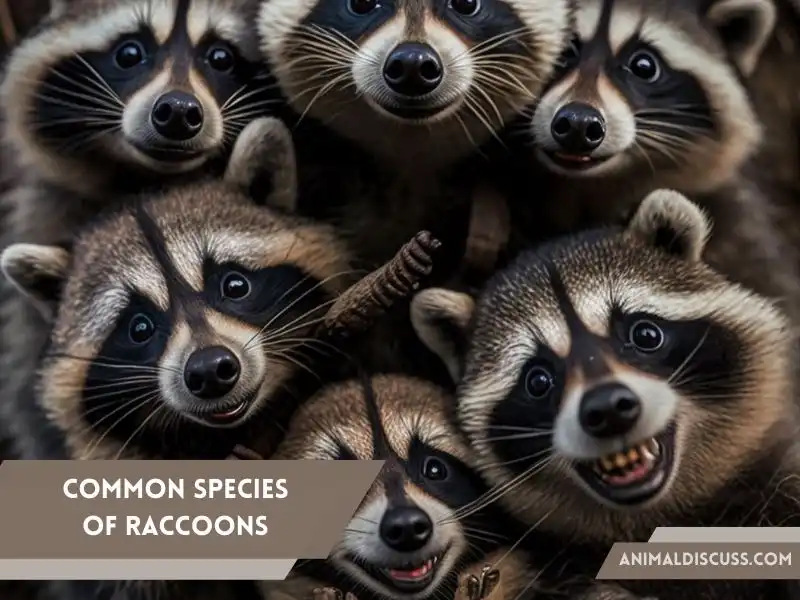
| Characteristics | Common Raccoons (Procyon Lotor) | Crab-Eating Raccoons (Procyon Cancrivorus) | Cozumel raccoon (Procyon Pygmaeus) |
|---|---|---|---|
| Color | Grayish-brown fur with blak bandit mask | Dark-brown | Reddish-brown |
| Size | Up to 70 cm body length with a tail length of up to 30 to 38 cm | Up to 54 to 65 cm with a tail length of up to 25 to 38 cm | fur color with black face mask Up to 40 cm body length |
| Weight | 2 to 26 kg | 3 to 7 kg | 1.4 to 5 kg |
Feeding Habits of Raccoons
Raccoons are omnivorous in nature. So, they eat everything that is edible. Their food habits range from garbage to delicious food, plants to vegetables to animal objects.
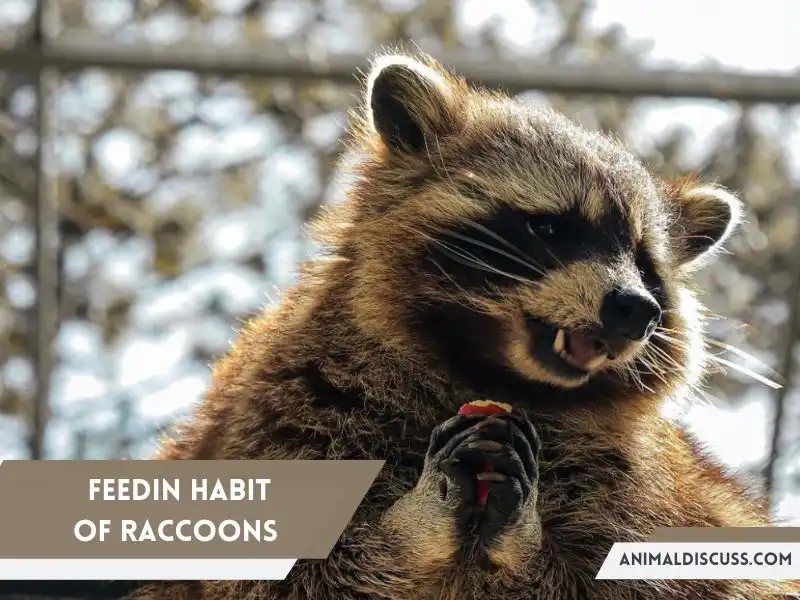
In urban areas, you will see them searching for food in bins and garbage. That is why they are known to people as “trash pandas.” They are opportunistic eaters, so they will take every opportunity of having food from anywhere, ranging from residences, streets, bins, rivers, farms, wetlands, forests, and wherever.
How Do Raccoons Hunt?
Since raccoons are opportunistic, they are known for stealing food from residence, garbage can, neighborhood, etc. They also hunt for insects, mice, rats, squirrels, birds, bugs, etc. They even eat other animals’ leftovers.
But when it comes to fishing or hunting aquatic animals, they become great hunters. Raccoons use their super paws to catch crayfish and smaller fish from rivers and convenient water sources. They use their paws to weaken their prey and use their teeth to cause damage to the prey so that they can’t escape.
Raccoons have a special habit of washing their food. If they are near water, they will dunk their food in it before consumption. Even the captive raccoons will use their forepaws for washing movement.
We need to know ‘Why do raccoons wash their food’. Their motive is not obviously to clean the food before eating !! Raccoons dunk their food before consuming and touch moist objects to figure out certain information, which lets them recognize what they eat.
Feeding the Cubs
Mother raccoons feed milk to their babies until they can eat solid food. This happens until the baby raccoons reach the age of around 2 to 3 months.
Generally, mother raccoons feed their babies every 4 hours on average and 5 to 6 times in 24 hours.
Mating (Breeding) & Migration Patterns
Mating and Breeding
The mating time of Raccoons is between January to Mid-March up to June. By this time, the females get pregnant by old male raccoons. During the mating season, male raccoons try to attract females with their courtship behavior. They include vocalization, ritualized activities, puffing the fur, etc.
Though young male raccoons are capable of impregnating females, they can’t usually do this due to the competition with the old males. Raccoons prefer different locations for mating based on their habitat location. They can mate in the ground, trees, attics, and water, wherever they make things comfortable and available.
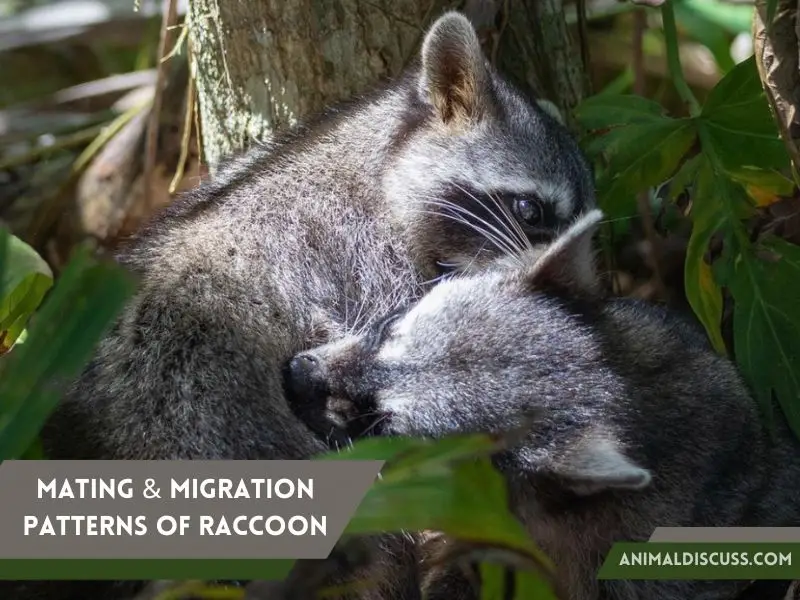
There are more interesting facts about the sexual behavior of raccoons. If the first attempt at being pregnant is missed, the female raccoons come again to mate with the male raccoons to be pregnant. Though males mate with multiple females, females mate with only one male.
On the other hand, the male raccoon rooms across the group of raccoons to make all females pregnant. But solely, he can’t impregnate all females. In such a case, weaker and younger raccoons get a chance to impregnate some of the females of the group. The mating season can last till June as a result.
Raccoon Breeding Facts:
- The gestation period of raccoons is around 63 to 65 days. This might become 54 to 70 days somewhere.
- Give birth to 2 to 5 cubs at a time.
- The size of newborn babies is around 2.5” to 4.8” and, in some cases, 6”. And this might be the highest.
- weight of newborn cubs can be 60 to 75 grams. This could be 100 grams maximum in rare cases.
- The newborn babies are called kits.
- Mother raccoons feed their milk to their babies 5 to 6 times a day till they age 12 weeks.
- At the mark of 4 months, they wean entirely and depend on solid food.
Migration Pattern
Raccoons are not traditional migratory animals. Since they have excellent adaptability, they can survive in different environments.
But raccoons can move from one place to another place in a measure of kilometers if there is food, water, and living space scarcity. Also, they can change their dens based on the activities of the surroundings, like human activities, urbanization, alternation of their living space, etc.
By the way, attics, chimneys, and animal-occupied abandoned burrows are among the locations they make their dens. Their preferred den locations also include rock hollow logs, brush heaps, tree holes, rock piles, etc. Also, they are mostly found in agricultural areas. Mixed woodlands are another preferred location to live.
Hibernation Behavior of Raccoons
Do raccoons hibernate? Unlike other hibernating animals, raccoons don’t go to traditional hibernation. Instead, they go to a state called “torpor state.” This is also an inactivity like hibernation, but for a short time.
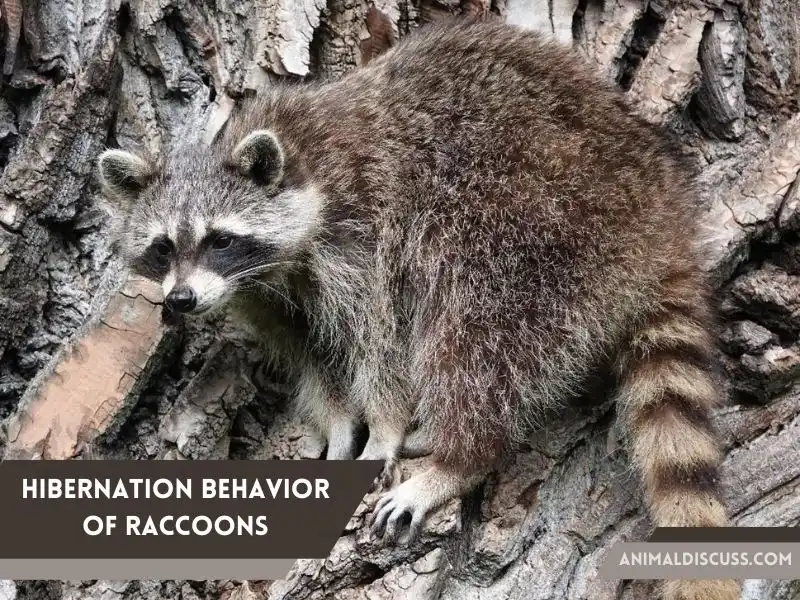
During the torpor, raccoons’ metabolic activity gets reduced, and they conserve their energy. Energy conservation is done by reducing the body temperature, heart rate, and respiration rate.
Ecological Adaptation
Raccoons can easily adapt to the environment. Consequently, they play a great role in the ecosystem because of their reliable adaptation ability. Raccoons adapt the following aspects to survive in their ecosystem.
Develop hand-like Paws: Raccoons have hand-like paws, which are called nimble. They can get food easier than other animals by grasping them from any source; including trees, water, and garbage bins.
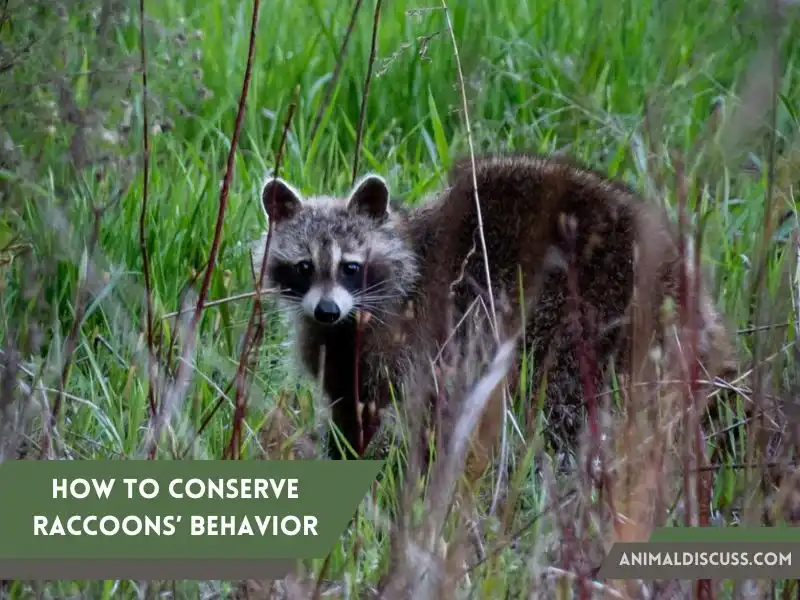
Temperature Tolerance: Raccoons are highly adapted to cold temperatures since they live in a cold ecosystem. They can adapt up to -34۠C cold and forage for food. They go into torpor and sleep until the temperature rises.
Solid Body Development: Another amazing body adaptation of raccoons is, they have insanely solid bodies. Raccoons can withstand falling from a height of 40 feet and can walk off.
Raccoons’ Role in Ecosystem
One of the most important roles of raccoons in the ecosystem is that they eat potentially harmful insects. Here specified some other important roles in ecology:
- Raccoons help to decompose dead animals and carrion by eating the leftovers from the environment.
- Raccoons hunt and eat rodents in large numbers, especially rats and mice, which control the rodent population Consequently.
- Raccoons eat various fruits and seeds. Also, seeds get caught in their fur. So, the seeds they carry on their fur are propagated in different areas. They also poop fruit seeds which help to propagate various fruit plants in different areas.
Social Behavior of Raccoons
Raccoons are solitary animals when there is no occasion to stay in a group. Actually, the fact is, they are semi-social animals. Raccoons can meet in areas where they can rest and feed themselves together. In this case, they won’t conflict with each other.
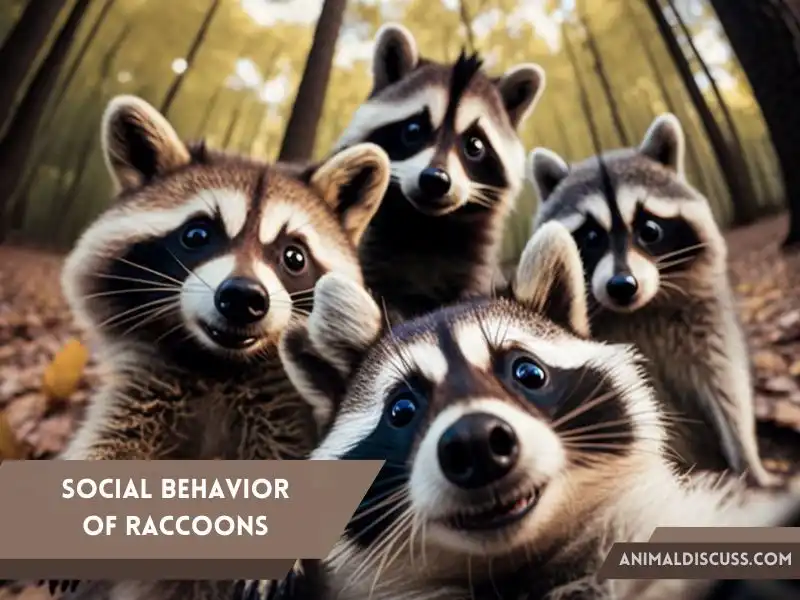
Though raccoons are solitary animals in nature, they become social at particular times. They basically live in a Fission-Fusion society by keeping a sex-specific social behavior. Also, the mother raccoons live a social life with the kits till they are able to learn to survive alone.
Some of the social behavior facts of raccoons are given below –
Social when mating: When it’s mating season, male raccoons can form a group to prevent invaders in the area so that foreign males can’t invade and impregnate the females. The male raccoons also keep accompanying the female ones too.
Social when breeding: Female raccoons are entirely solitary. But they make a family when they give birth to their kits. They keep the family bond until the cubs are able to survive alone, especially up to 12 months.
Raccoons often cooperate with others: You will often see raccoons help each other to get food, climb height, and others.
Social communication behavior: Raccoons use different types of vocalization to communicate with other raccoons. Also, showing different body signs, like raising the tail, is one of the signs that indicate aggression or defense. This happens when they feel threatened.
Aggression & Territorial Habits of Raccoons
Aggression and territorial behavior are mostly related to each other. The aggression and territorial habits of raccoons are discussed as follows.
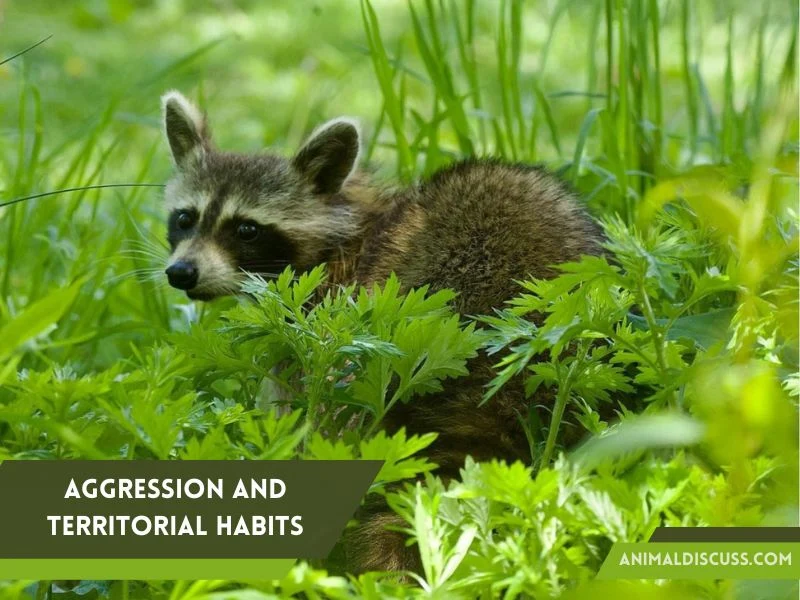
The Aggression of Raccoons
Basically, raccoons aren’t aggressive animals. But they are defensive. They won’t attack humans, nor most animals, but will defend their dens and cubs.
you If you confront a raccoon, you will recognize that they stare at you. This behavior of raccoons never shows aggression toward humans. So, why do raccoons stare at you? Raccoons stare while facing humans just because they are afraid of and watchful about the next attempt.
Sometimes, they become hostile to humans!! why do raccoons attack humans? If they feel threatened, they can woof or lunge at the potential threats, especially when their babies are with them.
If we are more specific, raccoons are sometimes aggressive to cats and dogs when it’s all about competition for food.
Territorial Behavior
Raccoons defend their living areas from threats like other raccoons or other animals. They use their vocals, use scent marking, and sometimes show aggression to defend their dens. But only if they get threatened.
But, inherently, they are not that territorial. One of the reasons behind, they typically have multiple den areas. So, when one of the dens is threatened, they move to another one.
Facts That Influence Different Behavioral Traits
There are tons of facts that influence the behavioral traits of raccoons. Some of them are as follows.
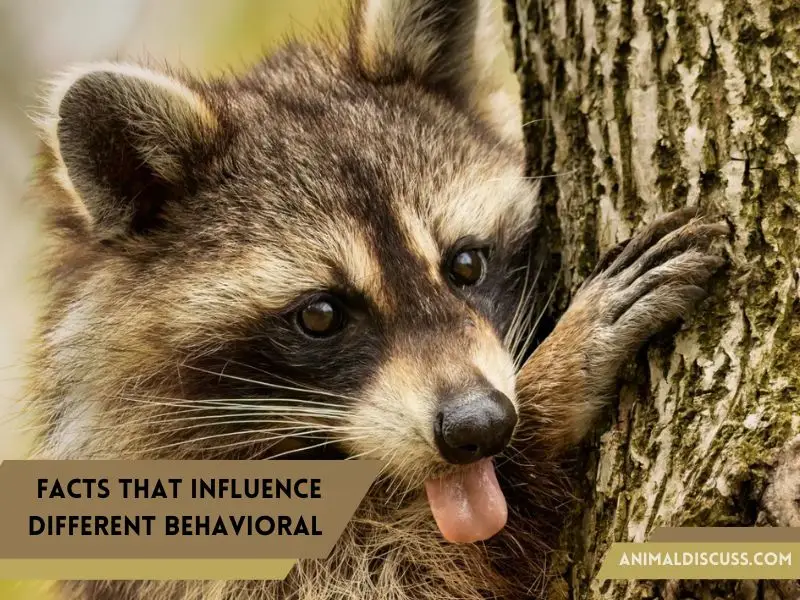
Living environment: The living environment is one of the most impactful aspects that influence raccoons’ behavior. For example, in urban and suburban areas, their interaction with humans will be normal.
On the other hand, in forest, woodland, and watery areas, their attitude and activity will be changed.
Also, in the wild, the lifespan of raccoons ranges from 2 to 3 years. Because accidents, predation, and diseases lower the lifespan. But in a captive living environment, raccoons can live up to 20 years due to proper feeding and care. Merlin, a captive raccoon, was recorded as 14 years old in CuriOdyssey.
Food availability: In urban and suburban areas, raccoons normally eat human food and waste. On the other hand, their food habits change in forests, woodlands, farmland, watery areas, etc. They generally hunt for animals. Also, eat fruits, vegetables, or whatever is available naturally.
Change of seasons: Seasonal change impacts raccoons’ behavior. While it’s drought, it will naturally move to watery areas. On the other hand, they increase their activity in summer and their breeding season. At the same time, they lessen their activity in winter or cold weather and instead go into a torpor state.
Breeding and mating: As we mentioned before, raccoons are solitary but become social during the mating and breeding season.
Genetics: Genetics determines how animals react to different events. It will help to distinguish different events differently. For example, animals will not react to predators as they do to food.
Another example is female raccoons are protective of their cubs, whereas males are not.
Human-Induced Facts That Change Raccoons Behavior
There are many human-induced factors that are responsible for changing raccoons’ behavior. They are as follows.
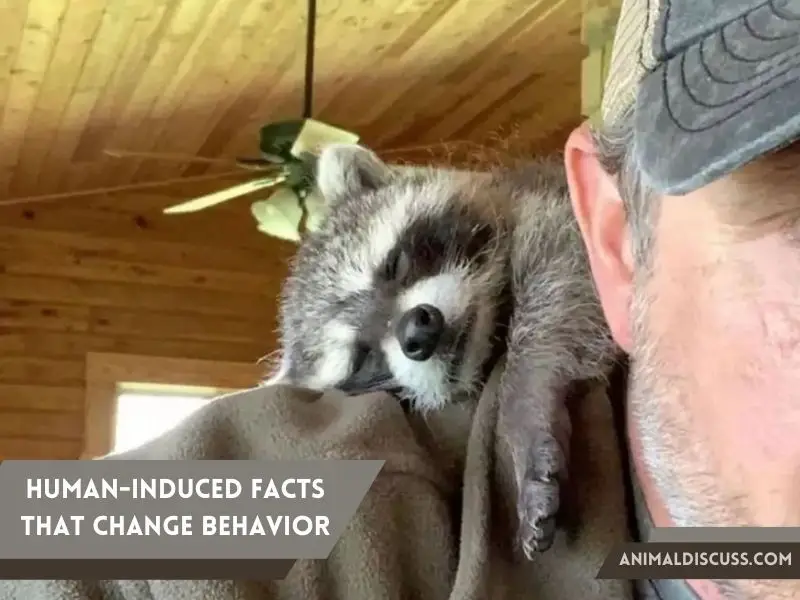
- Destroying habitat: By cutting down trees, filling the wetlands, fragmenting the lands, and many more, people are destroying the natural habitats of raccoons.
- Spreading pollutants: From various types of pollutants, several chemicals are released into the environment. The chemicals particularly impact the behavior of raccoons along with other animals.
- Hunting: People hunt raccoons for their fur. As a result, their behavior changes. They might be aggressive toward humans and avoid them.
- Food availability: Since raccoons eat human food and wastage, it increases the dependability of raccoons on humans for food. Their natural hunting behavior gets affected when fed by humans directly.
- Spread of foreign species: When humans spread new species of animals into the environment, they usually try to invade the environment. As a result, the native animals try to adapt to the new situation and bring changes to their behavioral characteristics. And the thing isn’t different for raccoons.
- Change of climate: Humans have one of the biggest contributions (in a negative sense) to climate change. Changes in climate impact the behavior of raccoons, as well as other animals.
- Use of pesticides: People often use pesticides to kill pests. In the meantime, raccoons can be affected by the food source they consume. Also, they might be directly the target of using pesticides.
How to Conserve Raccoons’ Behavior?
Raccoons are the least concern listed by The International Union for Conservation of Nature (IUCN). However, according to the Department of Environmental Conservation, the law protects raccoons.
You can’t possess a raccoon without a license. Also, you need a license to hunt them as well. Consequently, there is no alarm for the raccoons’ population decrease, rather they are sufficient in number.
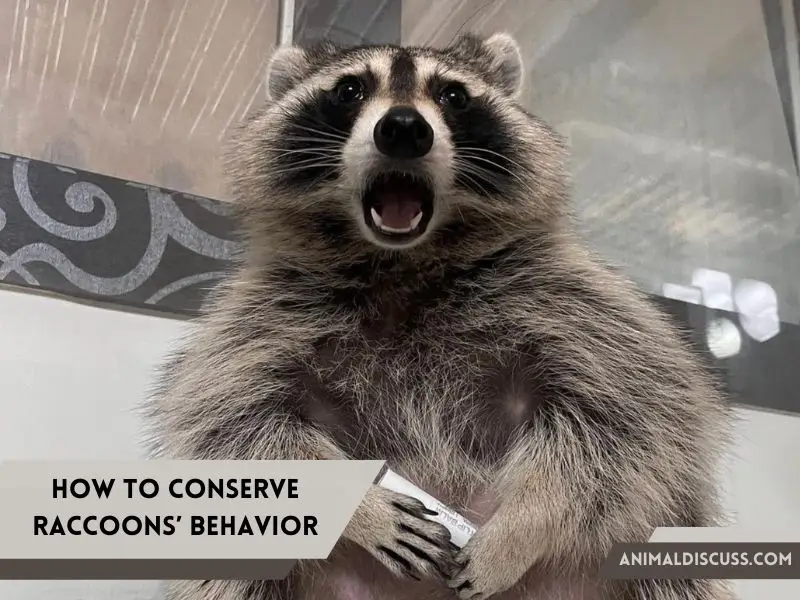
By the way, since human-induced facts have a major impact on raccoons’ behavior, we have to take the right steps to conserve their behavior.
Preserving natural habitat: The first and foremost step to take is to preserve the natural habitats of raccoons. People must refrain from destroying their natural habitats randomly.
Don’t feed raccoons: Does the heading sound awkward? Actually not. When people feed raccoons directly, they become dependable on the human food supply. And this destroys their natural food hunting, as we mentioned before.
So, keep yourself refrained from providing food to raccoons. Rather, let them manage their food by themselves. They will manage their food from garbage and waste even if you don’t feed them.
Cooperate and support the effort of conservation: Many organizations work to conserve animal behavior, including raccoons. We have to help cooperate with the organizations by promoting the events and raising awareness among people. To ensure the conservation, a well-planned and proper behavioral conservation framework should be followed.
Reduce hunting: As mentioned before, hunting raccoons change their behavior and can make them aggressive. Don’t hunt them unnecessarily. Also, your state may implement laws against hunting them. Follow the laws.
Stop spreading pollutants: Stop spreading pollutants everywhere. Use predetermined bins and places to tear off the garbage.
Final Thoughts
Since raccoons’ behavior is crucial for the ecosystem, understanding them is also crucial. Here we have discussed every behavioral side of raccoons to understand them well.
Changing their behavior can impact the ecosystem significantly. So, conserving raccoons’ behavior is required for the betterment of wildlife and the environment. To do so, proper behavior-based management must be implemented correctly.
Make sure you play the role of conserving raccoons’ behavior in your area. To learn more about raccoons, you can study different raccoons facts. They may include raccoons’ diet, raccoons habitats, etc.
Article References:
- 12 Unique Characteristics of Raccoons – Wildlife Informer
- Raccoons are great climbers – and wild neighbors · A Humane World (humanesociety.org)
- The Different Types of Raccoons – AAAC Wildlife Removal
- ADW: Procyon cancrivorus: INFORMATION (animaldiversity.org)
- Baby Raccoon – What you Need to Know (raccooncontrol.ca)
- Raccoon_Information.pdf (giveshelter.org)
- Raccoon – NYS Dept. of Environmental Conservation
- https://www.iucnredlist.org/species/14925/85658776
- https://wildlifestart.com/how-dangerous-aggressive-raccoon/
- https://www.sciencedirect.com/science/article/pii/S0960982206011924
- https://academic.oup.com/jmammal/article/91/3/749/849528

